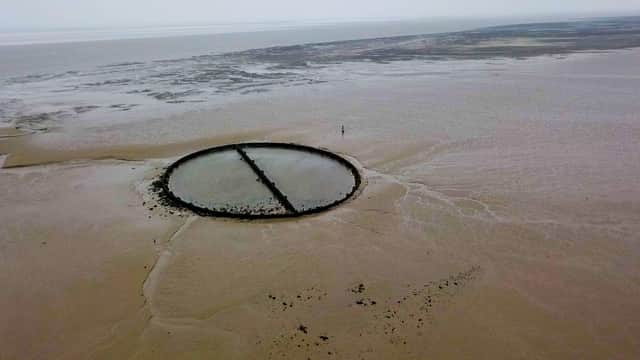Could Scotland’s growing love of wild swimming lead to a sea pool revolution?


Tidal pools were once found dotted along Scotland’s shorelines as small pools of sea water, with barriers cleaved from natural rock on the coasts.
Here, Scots could learn to swim, enjoy family days out and relax in seawater pools penned in by rocky boundaries. These, however, were permanently locked in a battle with predictably bad Scottish weather - forever fending off the fierce Scottish elements and proving a challenge to maintain.
Advertisement
Hide AdAdvertisement
Hide AdIndoor alternatives, with their warmth and clinical, chlorinated cleanliness quickly became a more straightforward, attractive option for swimmers as tidal pools diminished.
But plans to restore Pittenweem Tidal Pool in Fife to its former glory present a glimmer of hope for the resurrection of Scotland’s once-popular seawater pools. The West Braes Project hopes to rejuvenate local spaces which have left to gather dust and dirt in the community.
The Project’s volunteers recently signed a lease with Fife Council in August to confirm their 25 year take over of the Pittenweem Pool and local crazy golf course. With work underway to create a local, accessible space for outdoor swimming in the East Neuk of Fife, could there be hope for similar restorations of decaying pools on Scotland’s shores? Similar sites include Cellardyke Tidal Pool (also located in Fife, in nearby Anstruther), the North Baths in Wick and the Victorian-era Powfoot pool on the Solway Firth.
“I think the more options, the better” says Morna McLelland, who began wild swimming during lockdown at reservoirs in the Pentland Hills. She continues: “There are definitely some people who swim in the creek and there are some people who swim in the reservoir or freshwater. At the moment I’m a freshwater person, so the sea isn’t hugely appealing to me. But having said that I’m still on the start of this journey.
“It feels would feel more appealing to go to a tidal pool than just go into the ocean” Morna adds, noting how the presence of a natural or man-made barrier between the pool and a seemingly endless wall of water beyond it could make seawater swimming feel somewhat safer.
Like so many in Scotland, Morna has been “bitten by the bug” of wild swimming - mirroring the hoards of Scots online who have begun to connect, share tips and bond over the activity in popular Facebook groups. Groups like ‘Wild Swimming - Scotland’ and ‘The Wild Ones’ have seen an undeniable boost in membership in recent months, as people have sought out activities bringing relief from days spent glued to computer screens and spent largely indoors.
“I find it to be really calming” says Morna, “it’s brilliant that after a busy day at work I can just go into this pool of water in the hills where everything is so quiet and peaceful.”
With wild swimming remaining a popular way of removing ourselves from a hectic, ever-changing reality, it is unsurprising that decisions to bring accessible, affordable seawater pools back from the brink of our shores are being met with waves of support.